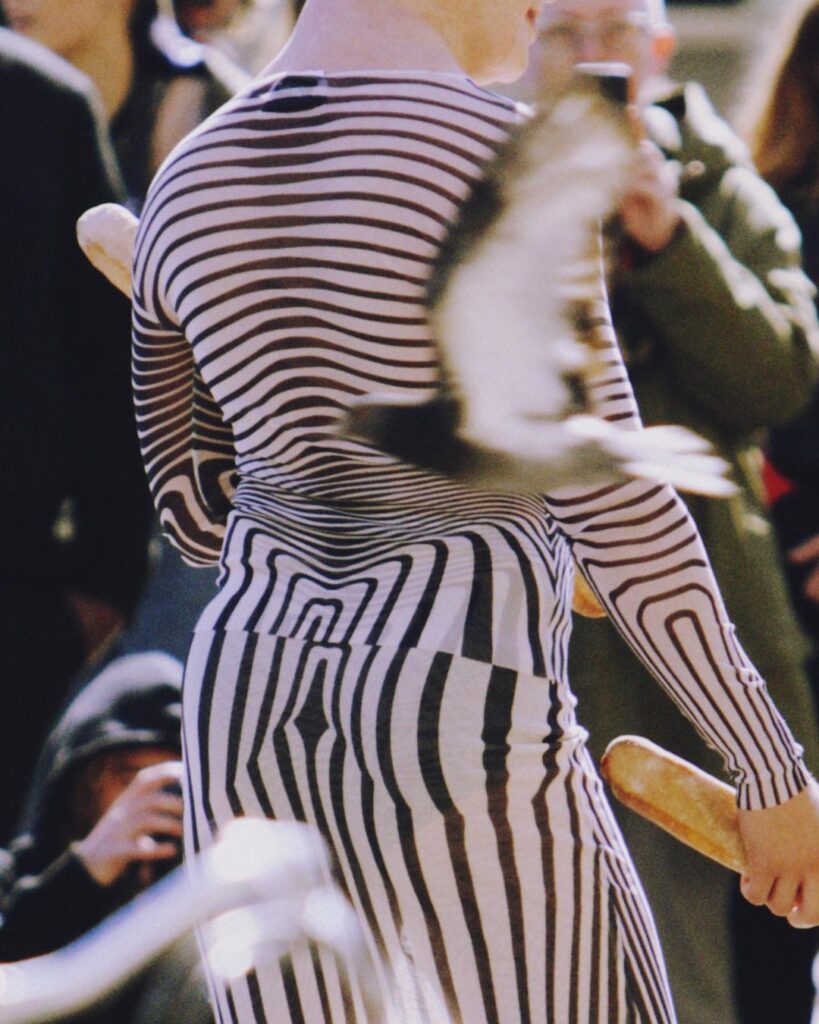On a sunny Tuesday afternoon in the iconic Les Halles district of Paris, amidst a diverse crowd of locals and tourists, something truly extraordinary was taking place. As fortunate onlookers sipped their drinks on terraces, they were treated to a sight that no tourist guide could have predicted. Jean Paul Gaultier, the legendary fashion designer known for his avant-garde creations and cultural significance, was being photographed by Grant James Thomas.



Dressed in his signature kilt and marinière, Gaultier took a moment to pause, baguette in hand, and flashed his famous smile. Little did anyone suspect that the iconic figure before them was actually a human illusion, masterfully crafted by Alexis Stone, a former drag queen turned plastic artist and king of metamorphosis.
Stone, who has gained a following of over 900k on Instagram, is known for his chameleon-like ability to transform his appearance into a myriad of characters. For this particular project, Stone had spent six weeks meticulously preparing to replicate Gaultier. Every detail, from the spacing of the teeth to the shape of the ears and the hairline, was carefully recreated to construct the prosthesis that Stone was wearing for the campaign shoot. Each image of Gaultier served as a reference point, allowing Stone to get even closer to reality in his transformation.
The result of Stone’s artistry was nothing short of breathtaking, blurring the lines of perception between reality and illusion. The couturier who was known for his fashion trompe l’oeil, or optical illusions, had himself become a trompe l’oeil, a fitting homage that delighted Stone. He explained that he loves to use his body as a canvas to create illusions, and Gaultier’s work had always inspired him to embrace total and unabashed freedom.


Stone, who considers himself part of the “Jean Paul Gaultier community,” a term he uses to describe those who are drawn to Gaultier’s work, reminisces about his earliest memory of the designer when he was a child, seeing the iconic perfume bottle shaped like a torso (Le Male). He recalls being captivated by the homoerotic allure of Gaultier’s creations and quickly realizing that Gaultier’s work was unapologetically proud and encouraged people to be themselves, regardless of their gender identity or sexual orientation. After a career spanning over fifty years, Gaultier’s impact on the fashion world and the LGBTQ+ community speaks for itself.
The “Dress like Jean Paul” collection, inspired by a 1994 photograph of Gaultier himself, embodies the quintessential Gaultier aesthetic. The marinière, a striped sailor shirt that Gaultier reworked throughout the 1990s to exude an erotic allure, and the kilt, which Gaultier introduced as a men’s skirt, are at the heart of the collection. These iconic garments, though they have been in the public domain for decades, continue to represent Gaultier’s enduring legacy and the limitless possibilities of fashion. The collection invites everyone to embrace a piece of Gaultier’s heritage and make it their own, a reminder that these garments can create a world where a different reality becomes possible.


